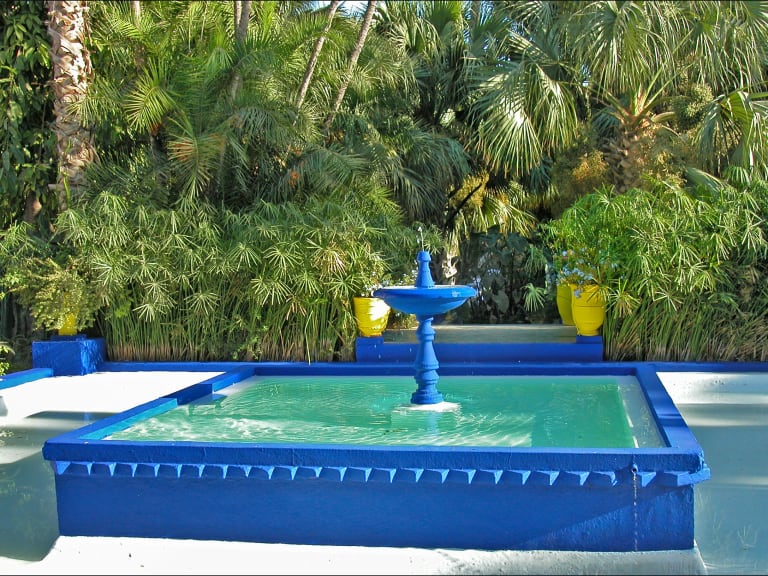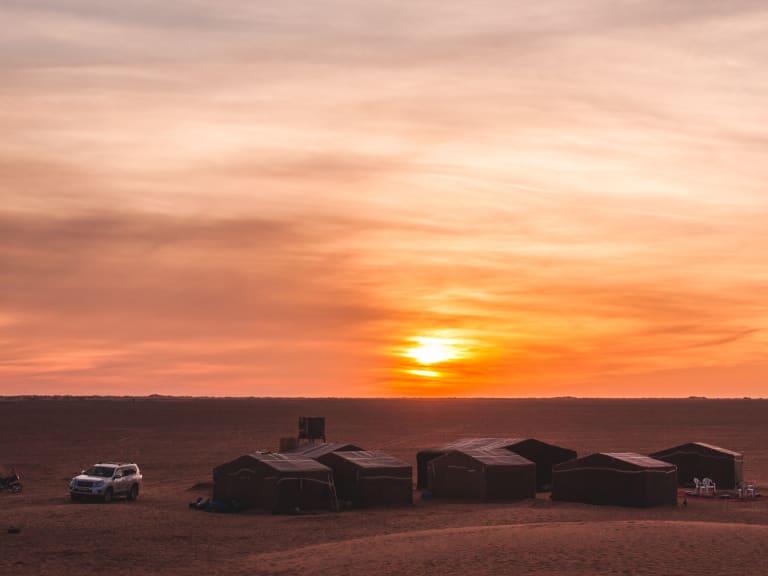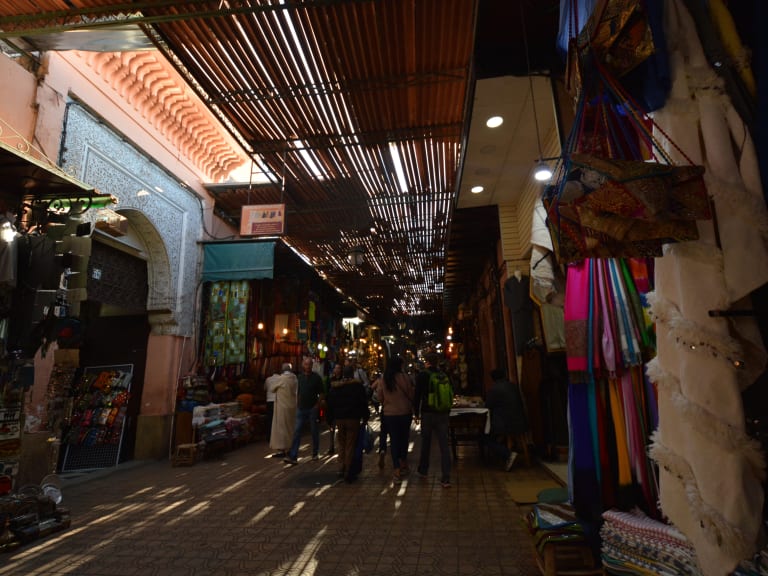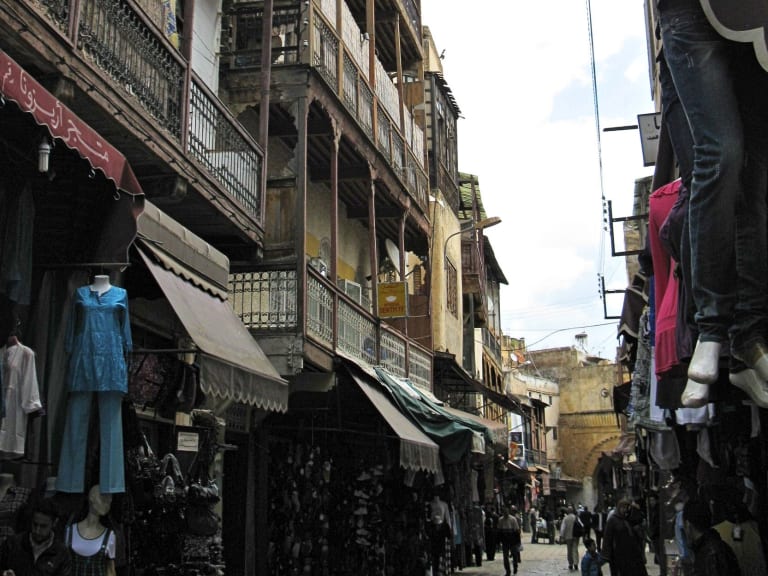More about: Best Things to Do in Marrakech in 5 Days
If you're staying for 5 days and want to know what to see and do in Marrakech, the tour I've prepared will help you to arrive with a good part of your homework done. Marrakech, with more than 1.5 million inhabitants, is one of Morocco's Imperial Cities, along with Fez, Meknes and Rabat. Strolling around Marrakech offers an incomparable experience: getting lost in the labyrinth of its streets, visiting the desert or experiencing the atmosphere of the Jamaa el Fna square up close. Find out what to do during these 5 days!
Day 1: First steps in the city to get to know the Jamaa el Fna and its gardens

Arriving in Marrakech is a considerable culture shock for many travellers. Many of them feel lost in the crowds of the medina and a little uneasy about the way some shopkeepers sell their wares. So it never hurts to consult some safety tips for your trip to Marrakesh and book a guided tour of Marrakesh, at least on the first day. For the first day you can start your route by making these stops:
- Jamaa El Fna Square: to see it in all its splendour, the place should be visited both in the morning and in the afternoon-evening, as the atmosphere changes noticeably. A tip for travelling to Morocco is to open your mind and not be intimidated by the locals.
- Stop at the Koutoubia Mosque: Islam is a major part of **Morocco'**s culture, so the proliferation of mosques in cities such as Marrakech is not surprising. The interior of the mosque cannot be visited by non-Muslims, but the exterior alone is worth a visit. If you book a guided tour of Marrakesh you can find out all about them.
- Visit the Dar Si Said Museum: it contains an interesting collection of carpets, furniture, textiles and other objects from the Berber culture. Unfortunately, the information inside the museum is somewhat lacking, so if you are very interested in the subject it is essential to have a guide.
Majorelle Gardens

To follow your route, I suggest you book a guided tour of the Majorelle Gardens, Marrakesh's landmark. The 9,000 square metres are surrounded by red walls and filled with palm trees, plants, cacti and ponds that exude peace and tranquillity. And later you can choose one of these options for dinner:
- Enjoy the sunset on a terrace: to spend the late afternoon and even have dinner if you wish, the best activity to do in Marrakech is to choose a terrace near Jamaa el Fna to enjoy the sunset. Popular spots include L'Adresse Jemaa Al Fna, La Pergola Jazz Bar (where they sell beer) and Le Salama.
- Dinner in Jamaa el Fna: although you can dine on one of the aforementioned terraces, to end this first day's introduction to Marrakech, the most classic option is to try the stalls set up in Jamaa el Fna with Moroccan food. Dare to wander among these stalls and choose one for dinner or even book a gastronomic tour to try all the typical dishes.
Day 2: 2-day excursion to the Zagora Desert

Marrakech is a great base for a number of organised excursions. Some will take you to the Marrakech desert or the Atlas Mountains, while others can be booked to take you to stunning locations such as Essaouira.
For this third day I suggest you book a two-day trip to the Zagora desert, visit Ait Ben Haddou and Ouarzazate and book a night in a Berber camp in the desert of Marrakech.
- Ait Ben Haddou: At the gateway to the desert awaits the spectacular ksar of Ait Ben Haddou. A ksar is a type of fortified settlement that the Berbers used to build in the desert, especially on the cliffs. Don't be surprised if you recognise its silhouette, as this place has been the setting for numerous films (The Mummy, Gladiator and Lawrence of Arabia, among others) and TV series such as Game of Thrones.
- Ouarzazate and Kasbah Taourirt: the name of the city comes from an Arabic expression meaning "without noise" and gives us a good idea of what life was like in the middle of the desert. You can book an excursion to Ouarzazate, which, unlike Ait Ben Haddou, tends to receive fewer tourists, which has allowed it to maintain a more authentic atmosphere.
- Zagora and Berber camp accommodation: From Ouarzazate you usually take a camel ride to reach the camp where you spend the night. Once at the camp, a traditional Berber dinner is served after watching the sunset. My advice is to get up early to also watch the sunrise over the desert before enjoying breakfast and making your way back to Marrakech.
Day 3: Return to Marrakech and relaxing afternoon

The third day of the trip starts with breakfast at the Berber camp and the return to Marrakech. Normally, you don't arrive very late in the city, but my advice is to rest for a few hours before getting back on the road. For this day I suggest:
- Tour the modern city of Gueliz: when the French took over the protectorate of Morocco, they brought with them the idea of modernising part of the infrastructure in the image and likeness of European cities. In Marrakech they built the Gueliz quarter to try to achieve this goal. Here you will find some of the best restaurants in Marrakech.
- Afterwards, relax in a hammam...: in Marrakesh you can choose between several of these traditional baths. The traditional bath begins with the application of steam, sauna-style, to cleanse the body and relax the mind.
Day 4: Medina and souks

After three days, you'll probably have got the hang of the city and the way of getting around. If not, remember that booking a guided tour of Marrakech will take the worry out of booking visits to the next two destinations: the Marrakech Medina and the souks. In addition, organised tours usually also include visits to the following destinations:
- The Saadid tombs via Bab Agnaou: the Saadid tombs. It was a forgotten site until 1917, when it was rediscovered and opened to visitors.
- The remains of El Badi Palace: Sultan Al Mansur, the same Sultan buried in the Sa'did tombs, was responsible for the construction of this palace at the end of the 16th century. At the time, El Badi Palace was one of the most impressive palaces in the world.
Ben Youssef Madrasa

And I recommend that you continue your tour of the medina until you reach the Medersa (or Madrasa) Ben Youssef, a religious college specialising in the study of Islam. On the way, don't miss the Place des Ferblantiers, as well as the many interesting spots that will appear along the way.
- You can stop for lunch in this area: I recommend several places, all quite close to the madrasa you have just visited: the Kafe Merstan, the Naima Couscous or the Bigua Cafe. You also have the option of booking your gastronomic tour of Marrakech.
- And how about spending the afternoon in the souk: Marrakesh's souk is divided into various sections depending on the type of product. There you will find everything. A good idea is to hire a specific tour of the souks of Marrakesh.
- And, to take a break from this exhausting experience and end the day, I recommend you stop off at the Secret Garden.
Day 5: The Palm Grove, picnic in a garden and stroll through the Mellah

Normally, the route on the last day is determined by the departure time of your flight. This article on how to get from the airport to Marrakesh has information if you need it. The itinerary for this day includes the following:
- Visit The Palm Grove: more than 100,000 palm trees, a large number of plantations and as many fruit trees make this space located about 10 kilometres from Marrakech a place to relax. There are several ways to get to know the area, but the best is to book your excursion to the Palm Grove.
- Have a picnic in the Menara Gardens: on your way back from the Palm Grove have a picnic in these gardens of ponds and olive trees, a popular destination for locals to sit in the shade and have a bite to eat, especially in summer in Marrakech when the heat gets hotter. It's a great plan if you're travelling to Marrakech with children.
Mellah, the Jewish quarter of Marrakech

And, as the last walk of the trip, we suggest you take a stroll through one of its most historic neighbourhoods, the Mellah. It was built by the Spanish and Portuguese Jews who were expelled from their countries in the 16th century. When they settled in Marrakech, they brought their customs and religion with them. You can do your last bit of shopping here, as prices are cheaper than in the medina and it is usually less crowded. Among all the attractions in the neighbourhood, there are two that you should not miss: the synagogue and the Jewish cemetery.
Final dinner with a show
And finally, if you are lucky enough to have a flight that doesn't leave until the next morning, the last dinner in the city can be at a restaurant that includes a belly dance show. My advice is to ask your hotel or one of your guides which restaurants are the most suitable, trying to avoid the more touristy ones.















